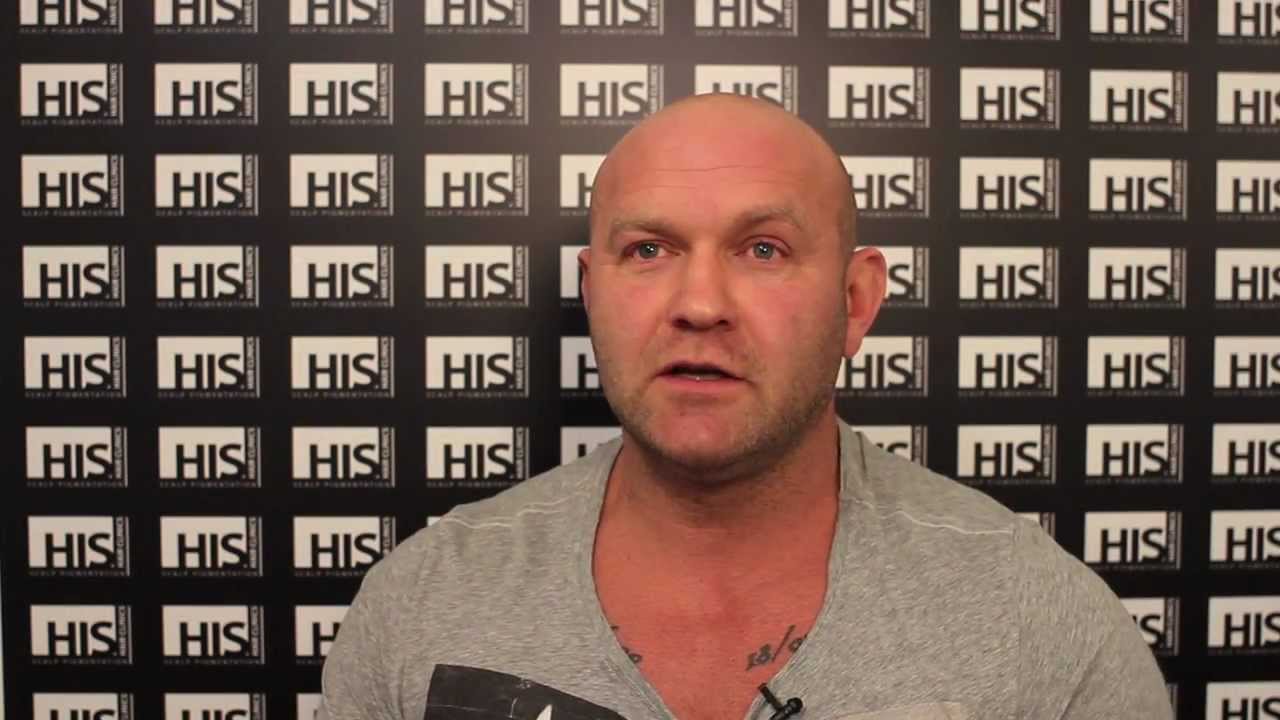Natural Remedies for for the Treatment of Hair Loss
Since the introduction of Rogaine in the early 1980's, androgenic mediated hair loss, or 'male pattern baldness' has been considered a treatable condition through the use of pharmaceutical preparations. The perception that over-the-counter and prescription drugs are the only means to successfully treat this type of hair loss is perpetuated by the lack of well-funded and publicized studies on the efficacy of natural treatments. However, as the understanding of the biological mechanism of male pattern baldness has become clear through a great body of research, the reality of an effective natural treatment regimen is at hand. After a review of the available natural products, some suggestions will be made for creating your own regimen for treating hair loss naturally.
The overall cause of male pattern baldness is now well-known: this type of hair loss seen in about a third of the male population is mediated by the androgenic metabolite of testosterone known as dihydrotestosterone or DHT. The production of this now-infamous hormone increases later in life for many men, along with changes with the receptors for this hormone at the hair follicles.
In general, the pertinent hair follicles shrink with continued exposure to the androgenic hormone, some forming only small, villus hairs, while others eventually die completely. Some sources claim these follicles are still getting an adequate blood supply, while others note a waxy buildup or scar-like tissue surrounding the follicles, preventing adequate nutrient delivery. Thus, the localized cause of hair loss, at the follicle level, is still being researched. This does not mean there has been success in discovery of natural hair loss remedies!
The regrowth of hair due to androgenic-induced loss should be addressed on two fronts. First, the levels of DHT produced within the body (rather than topically) should be addressed, along with the binding of DHT at it's receptor sites. Second, hair growth should be stimulated topically with application of nutrients and / or DHT suppressors on the follicles themselves. Let's first address the suppression of DHT production and binding systemically (within the body).
Prescription drugs such as Finasteride and Dutasteride are available which lower blood levels of DHT, and have been used to improve hair loss conditions. There are now several well-known natural, plant-based products which either reduce testosterone's conversion to DHT (via the 5-alpha-reductase enzyme system), block the binding of DHT to receptor sites, or both. Most common, and most important are Saw Palmetto Berry extract and Stinging Nettle Root extract. These to herbs work in combination to both block the conversion of testosterone to DHT and prevent it's binding to receptor sites in the scalp. Other herbs employed with similar functions include pygeum africanum and pumpkin seed oil, both used to bring into balance the testosterone / DHT ratio; lastly, the plant sterol Beta-Sitosterol is often used successfully to treat prostate enlargement, which has similar causes to male pattern baldness – whether it will support hair growth is not yet known, but it likely will not hurt !. Finally, getting an adequate supply of Zinc is also important in maintaining this hormonal balance. The entire androgen hormone regulation system is fairly complex; just remember these items: Saw Palmetto, Nettle Root (not leaf!), Pygeum, Zinc, and Beta-Sitosterol. By the way, if using a prostate formula for these nutrients, they should be taken in gel cap form – they are better absorbed this way than in plain powder, and hence more effective.
In addition to these herbs, which are also commonly used around the world for blocking the creation and effects of DHT, Procyanidins, or Polyphenols, have been shown to inhibit DHT systemically, AND can stimulate hair growth when applied topically. These anti-oxidant compounds first became renown with the discovery of the amazing action of grape seed extract and it's powerful ability as a free-radical scavenger. More recently, Japanese researchers went through the effort of testing HUNDREDS of compounds in the laboratory for their effect on the stimulation of hair growth, and they found the compounds of grape seed extract grew hair at a greater rate than the pharmaceutical preparation Minixodil. With further testing, using variations of the polyphenols, they discovered those found in apple skin polyphenols to be even more effective, nearly twice effective as Rogaine. Further, with the addition of Forskolin, another herbal extract, the effect was even greater. Exciting news! The interesting thing is that these compounds actually stimulated the hair follicles to become active, whereas it seems Rogaine works by lowering blood pressure in the scalp, thereby increasing blood flow to the follicles. And these compounds did not produce an initial 'shedding' as Rogaine has been known to do.
Ok, before we get to the good stuff – like how to create your own hair regrowth program, let's look at one more class of natural products – essential oils. Essential oils are powerful, aromatic compounds distilled from plants, with highly regarded medicinal properties, well beyond the effects of only their aromas. Rosemary essential oil has long been considered a 'hair tonic', more than likely because of it's ability to stimulate blood flow locally. A certain type of rosemary, known as rosemary verbenone, also contains compounds which influence skin regeneration. Recall the addition of Retin-A to the use of Rogaine? This was to stimulate the turnover of the skin, increasing the pace of the hair regrowth process. Other essential oils, such as Lavender, have an anti-inflammatory (inflammation is sometimes implicated in hair loss) and skin regenerating effects. Thyme and Cedarwood oils have also been studied, and the combination of these oils has been shown effective at hair growth stimulation in patients with alopecia areata.
Given all this wonderful information, how does one combine them into an effective regimen? The best thing to do is keep it simple – the more simple it is, the more likely it is you'll stay with it for the several months it will take to see significant effects. So, for the systemic DHT suppression and inhibition, look at formulas either designed specifically for hair, or those for the support of the Prostate gland – they will contain almost the exact same ingredients. Look for a high-quality supplement, with standardized Saw Palmetto extract, Nettle Root extract, and Pygeum extract. Do not take the un-extracted herbs, they will not likely be strong enough in doses you are willing to consume. Saw Palmetto can be consumed in doses between 160 and 320mg daily, Nettle Root a bit more, and Pygeum significantly less. They should be in a gel cap, preferably in Pumpkin seed oil. Take a separate Beta Sitosterol supplement, around 400mg daily, if it is not included already. This is typically found in dry capsules, and there have not been reports of the importance of consuming this in an oil-based capsule, though you can take it with fatty food if you want to be sure (this may help the absorption). Add an oral supplement of Green Tea extract, Grape Seed extract, or Apple Polyphenol extract if you like, along with a good multivitamin.
Now for the topical applications – the polyphenols can be mixed in water. Even better would be to find Nettle Root, grind it up and make a strong tea. To this, create a 1-3% solution by weight of the polyphenols in the liquid and apply twice daily (shake really well or use a blender). Grape seed extract is acceptable, though apple polyphenols would be best. They are hard to come by just yet, but are becoming more popular and available. A bulk supply is best, so you do not have to go opening capsules! A .5-1% addition of Forskolin herb extract can be made io increase effectiveness, but is not completely necessary. Applying right after a shower may make it easier to distribute the liquid on the scalp, and may also increase absorption. It is important to note that increasing the concentration beyond 1% for Grapeseed extract and 3% for Apple polyphenols extract is not advised – higher concentrations did not show increased efficacy – in fact, there may be an opposite effect. For the record, there are about 30 grams of water in one ounce; 1 gram of powder in this is just over a 3% solution. Finally, to this solution, a small amount of the Saw Palmetto blend from a ge lcap can be added – though the efficacy of this has not been noted in the literature.
For the essential oils, use 1ml of each oil per one once of carrier oil (a blend of jojoba and grapeseed was used in the study showing hair regrowth in Scottland). Because this is is not as attractive once applied, though you will smell nice, apply in the evening, before bed, between once a day and once every three days. Or apply during the day some time, massaging into the scalp, and leaving in for 20 minutes to an hour, then wash out. This will give enough time for the oils to penetrate the skin and have their effect.
So there it is, the roundup of the more well-known and tested natural remedies for male pattern baldness. While Rogaine for growth stimulation, and Finasteride or Dutasteride for DHT inhibition are completely reasonable ways to go, their costs are high and the effects of their long term use are not well known. And then there are some folks that would prefer to stay away from chemically manufactured medicines altogether – hopefully this bit of information will help. There is much more research available on the internet, though hopefully this is enough information to get you confidently started.
Natural Remedies for for the Treatment of Hair Loss by Eric Cech




